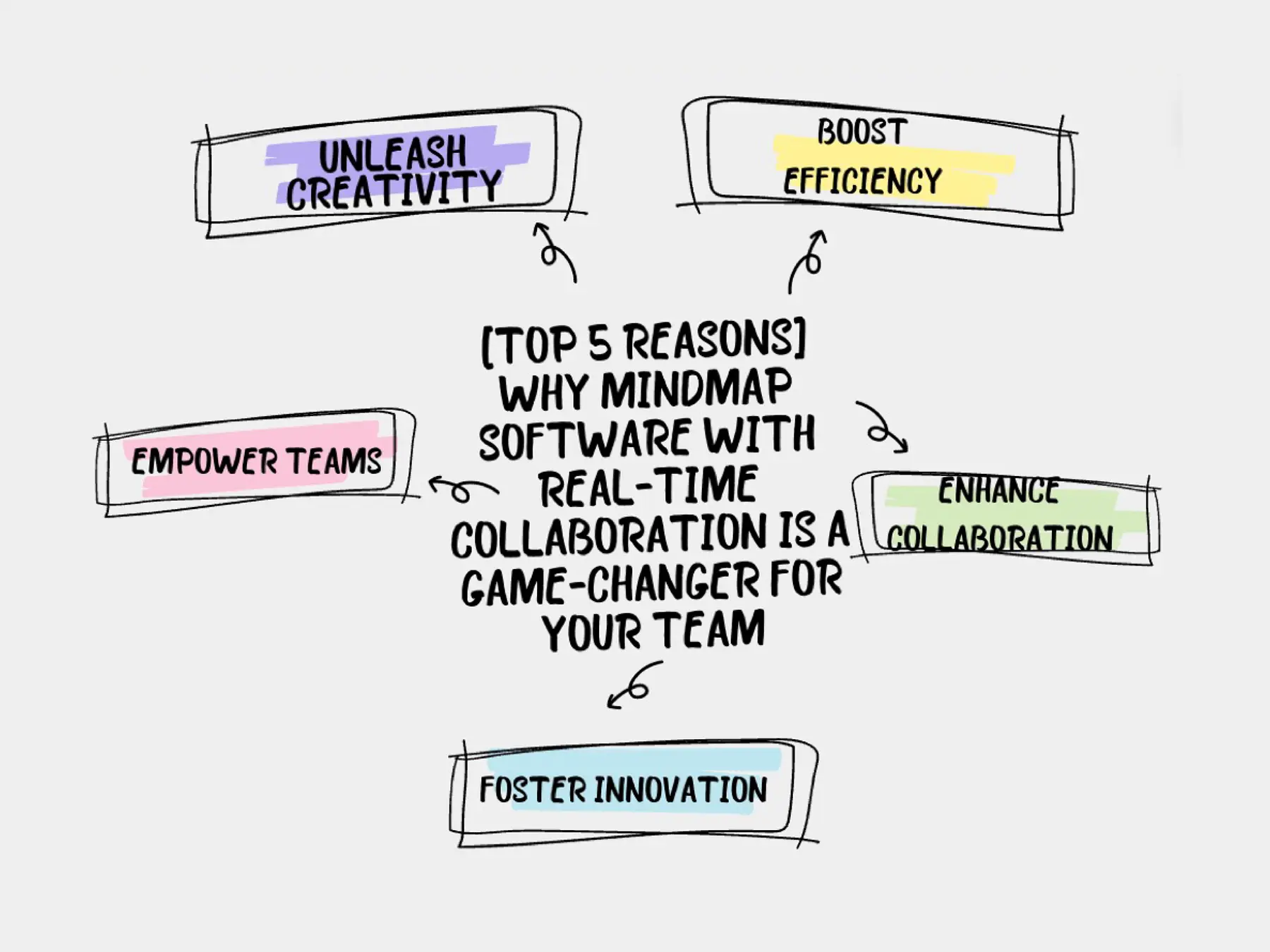
[Top 5 Reasons] Why Mindmap Software with Real-time Collaboration is a Game-Changer for Your Team
Explore the benefits of mind mapping software with real-time collaboration, a tool transforming teamwork and project management.
Education Consultant
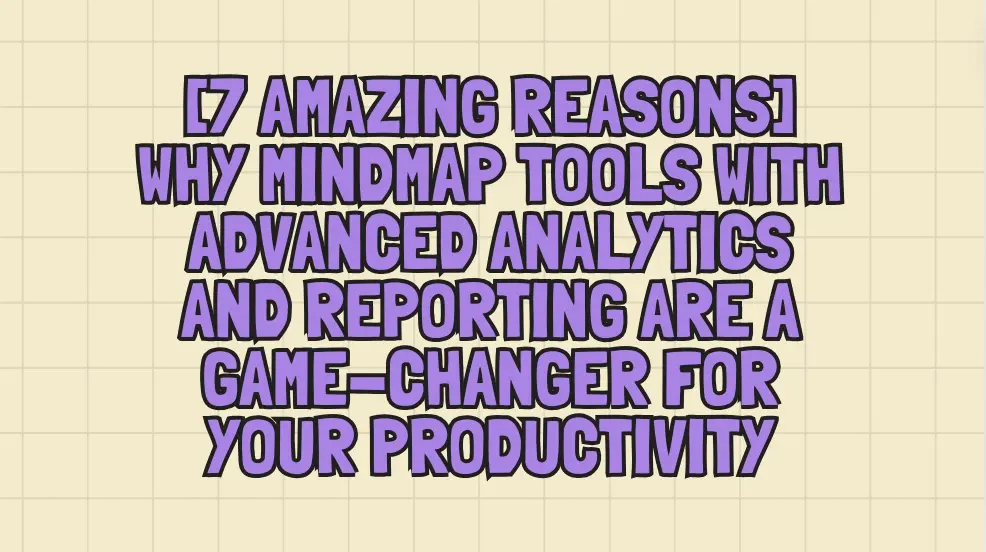
Navigating complex projects and big-picture strategies requires more than just traditional planning tools. That’s where mindmap software, equipped with advanced analytics and reporting capabilities, comes into play. These powerful solutions go beyond basic visualization, offering a dynamic way to transform scattered thoughts into actionable insights. Today, we’ll uncover seven compelling reasons why these enhanced mindmap tools are set to redefine the way you approach productivity and decision-making.
While traditional mindmaps offer a great way to visualize and organize ideas, they often lack the depth needed for complex planning and decision-making. These basic tools allow users to connect thoughts and concepts, but they struggle to manage large volumes of data and provide actionable insights. Without the ability to automatically analyze trends, patterns, or connections, traditional mindmaps can quickly become overwhelming as more information is added. This limitation can hinder your ability to transform initial brainstorming sessions into well-structured plans and data-driven decisions.
Additionally, traditional mindmaps do not have built-in automation features, meaning users must manually update and manage changes. This can lead to inconsistencies, errors, and wasted time, particularly in collaborative projects where multiple contributors are involved. With no advanced reporting or integration options, traditional mindmaps also fail to communicate findings effectively to stakeholders, making it harder to drive project success and strategic alignment.
Mindmapping is inherently creative, allowing you to explore ideas in a non-linear way. However, traditional mindmaps can sometimes become overwhelming, especially when dealing with vast amounts of information. This is where advanced analytics come into play. Mindmap tools equipped with analytics features can automatically analyze your maps, identifying patterns, trends, and connections that you might not have noticed. This structured insight not only keeps your creativity flowing, but also ensures that your ideas are grounded in logical structure, making your brainstorming sessions more effective.
For example, these tools can categorize your ideas based on the frequency of keywords, connections between nodes, and even sentiment analysis if you’re working with textual data. This level of insight turns a simple mindmap into a powerful strategic tool, helping you make data-driven decisions while still embracing your creative instincts.

Image from: Mural
One of the most significant advantages of using mindmap tools with advanced analytics is the ability to make informed decisions. Traditional mindmaps are excellent for visualizing ideas, but they lack the depth of analysis needed for complex decision-making. Advanced mindmap tools can integrate with other data sources, providing real-time analytics and reports that give you a comprehensive view of the information at hand.
For instance, if you’re planning a marketing campaign, an advanced mindmap tool can pull data from your CRM, social media analytics, and sales reports, displaying this information directly on your mindmap. You can instantly see which strategies are working and which aren’t, allowing you to pivot your plan accordingly. This data-driven approach leads to smarter, faster decisions that can significantly improve your outcomes.
Collaboration is key in today’s work environment, and mindmap tools are no exception. Advanced mindmap tools with real-time analytics and reporting capabilities make collaboration more effective by providing every team member with the same, up-to-date information. This transparency ensures that everyone is on the same page, reducing misunderstandings and increasing efficiency.
Imagine you’re working on a product development project with a team spread across different locations. An advanced mindmap tool allows each team member to contribute ideas, track changes, and analyze data in real time. The built-in analytics can instantly highlight potential bottlenecks, resource allocation issues, or emerging trends, enabling the team to address problems before they escalate. The result? A more cohesive team effort and a higher-quality final product.
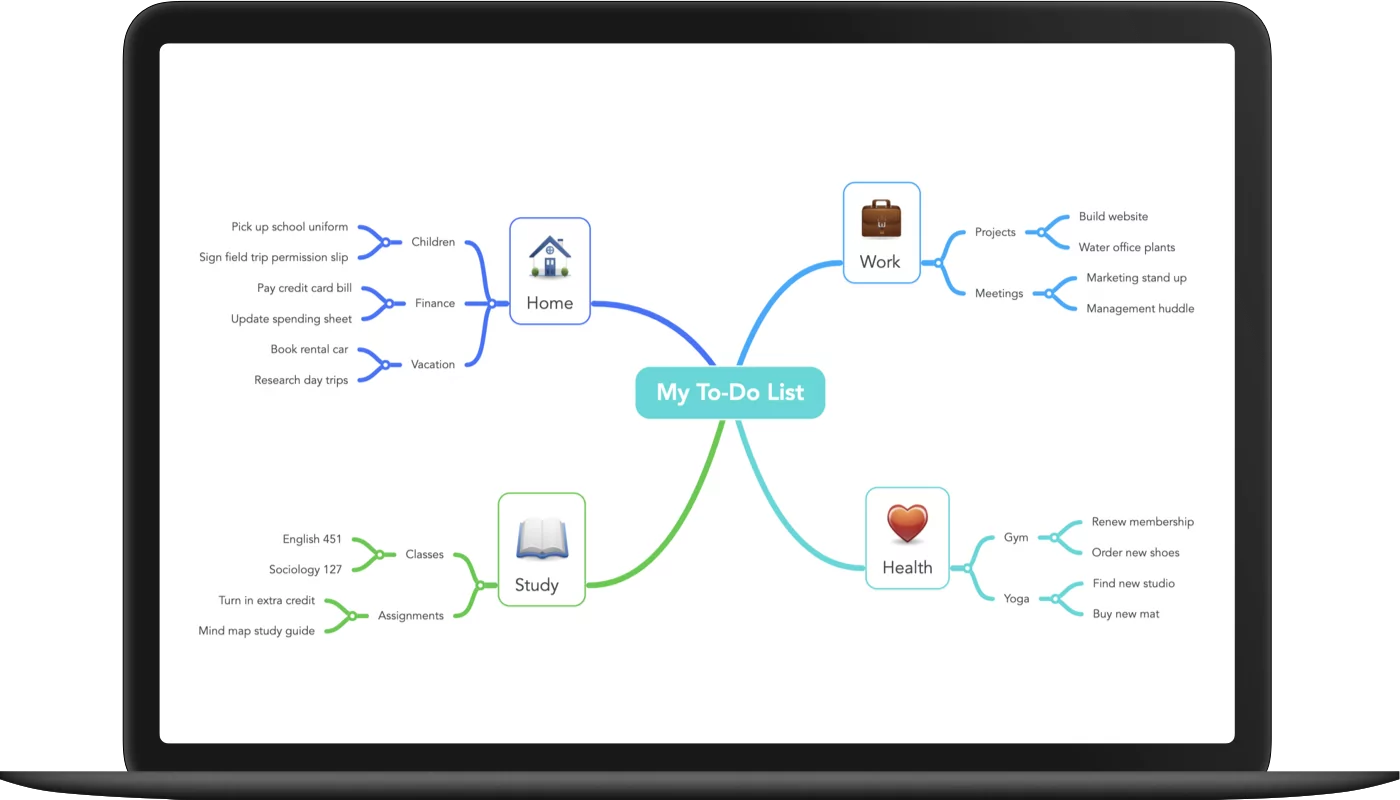
Image from: mindmaps.com
One of the biggest challenges with any project is reporting. Gathering data, organizing it, and presenting it in a clear, understandable way can be time-consuming. Mindmap tools with advanced reporting features simplify this process by automatically generating reports based on your mindmaps. These reports can include data visualizations, trend analyses, and summaries, making it easy to share your insights with stakeholders.
For example, if you’re preparing for a board meeting, instead of spending hours compiling data from various sources, you can generate a comprehensive report directly from your mindmap. The tool can create charts, graphs, and other visual aids that make complex data easy to understand. This not only saves you time but also ensures that your reports are both accurate and visually appealing.
Automation is a key feature of advanced mindmap tools, enabling you to save time on repetitive tasks and focus on what truly matters—your ideas. These tools can automate various aspects of the mind-mapping process, from data collection and analysis to report generation and task management.
For instance, if you’re managing a project, the tool can automatically update your mindmap with the latest project data, track progress against deadlines, and even send reminders to team members about upcoming tasks. This level of automation reduces the manual workload, allowing you to focus on higher-level strategic thinking and problem-solving.

Image from: Canva
Risk management is an essential part of any project or strategy, and mindmap tools with advanced analytics can significantly enhance this process. Predictive analytics features can analyze historical data, identify potential risks, and suggest mitigation strategies. This proactive approach helps you anticipate problems before they arise, reducing the likelihood of project delays or failures.
For example, if you’re planning a product launch, the tool can analyze past launches to identify common pitfalls and risks. It might suggest adjusting your timeline, reallocating resources, or revising your marketing strategy based on these insights. By incorporating predictive analytics into your mind-mapping process, you can make more informed decisions that reduce risk and increase the chances of success.
As your business grows, so do the complexities of managing it. Mindmap tools with advanced analytics and reporting are scalable solutions that can grow with your business. Whether you’re a small startup or a large enterprise, these tools can handle the increasing amount of data and complexity that comes with growth.
For example, as your team expands, the tool can manage larger mindmaps, integrate with more data sources, and provide more detailed analytics and reporting. This scalability ensures that you always have the right tools at your disposal, regardless of the size or complexity of your projects.
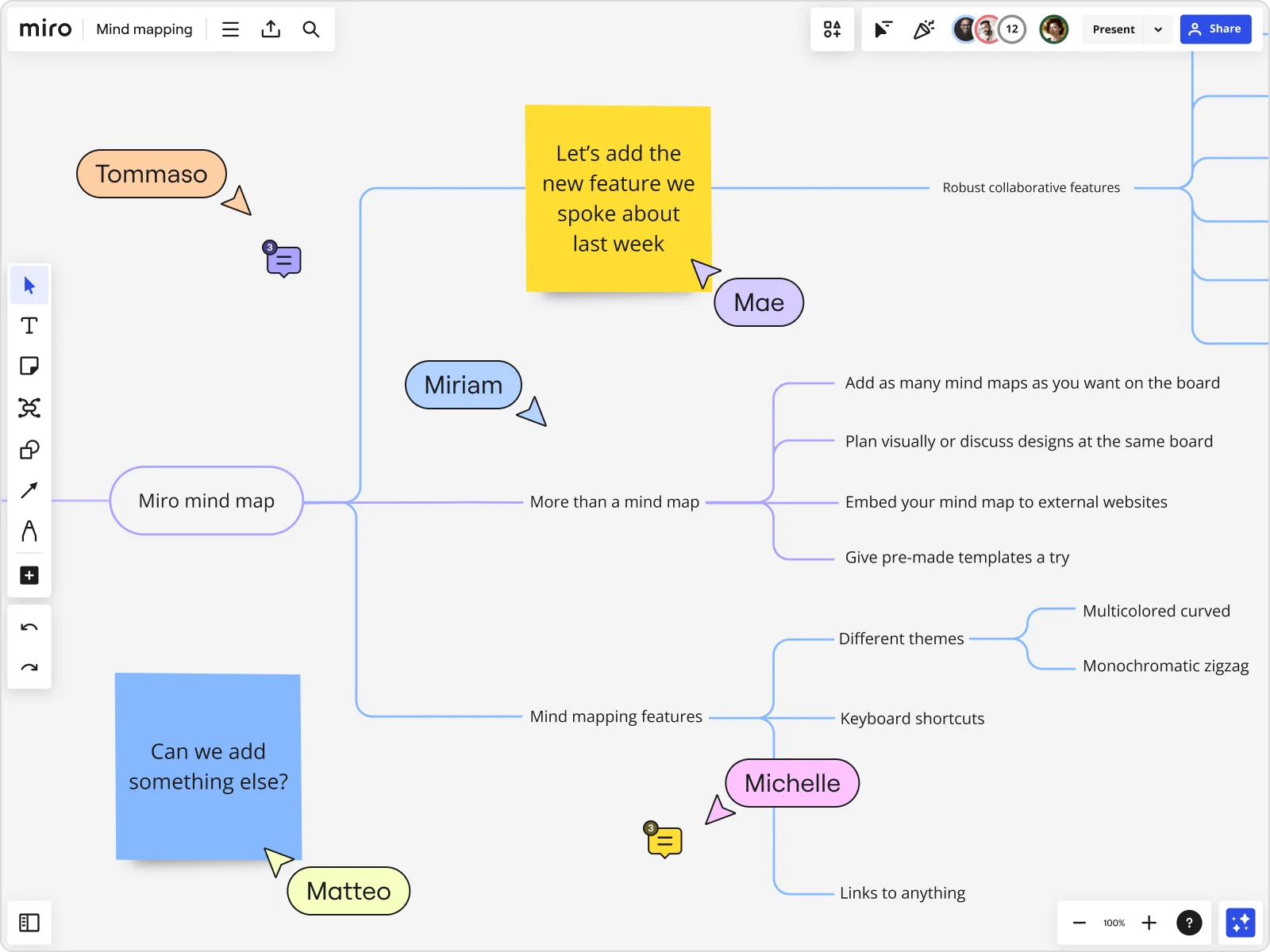
Image from: Miro
| Feature | Traditional Mindmaps | Advanced Mindmaps with Analytics |
|---|---|---|
| Idea Organization | Visualizes concepts but can become cluttered with large data sets | Uses keyword frequency and node connections to streamline information |
| Data Analysis | Manual analysis; lacks insights into patterns or trends | Automated analysis of trends, patterns, and connections for strategic insights |
| Automation | Limited or no automation; requires manual updates | Automates updates, reminders, and data integration |
| Collaboration | Basic collaboration features, often leading to version control issues | Real-time collaboration with integrated reporting and data transparency |
| Risk Management | No predictive analytics, making it difficult to anticipate issues | Predictive analytics for risk identification and mitigation |
| Scalability | Becomes cumbersome with complex or large-scale projects | Scalable to handle large data volumes and complex integrations |
| Reporting & Visualization | Manual report generation; limited visualization options | Automatic reports with interactive charts, graphs, and visual aids |
| Decision-Making Support | Limited decision-making support, mostly visual guidance | Data-driven decision-making through integrated analytics and reporting tools |
Incorporating advanced analytics and reporting features into your mind mapping process is more than just an upgrade—it’s a game-changer. These tools provide structured insights that enhance creativity, data-driven decision-making, real-time collaboration, effortless reporting, and better risk management. They automate mundane tasks, allowing you to focus on strategy and innovation, and offer scalable solutions that grow with your business.
By leveraging the power of mindmap tools with advanced analytics and reporting, you can transform your approach to planning, brainstorming, and project management. Whether you’re a solo entrepreneur or part of a large team, these tools will help you stay organized, make smarter decisions, and ultimately achieve your goals faster and more efficiently.
So, why not take your productivity to the next level? Embrace these amazing tools today, and see the difference they can make in your work and life.

Explore the benefits of mind mapping software with real-time collaboration, a tool transforming teamwork and project management.
Education Consultant
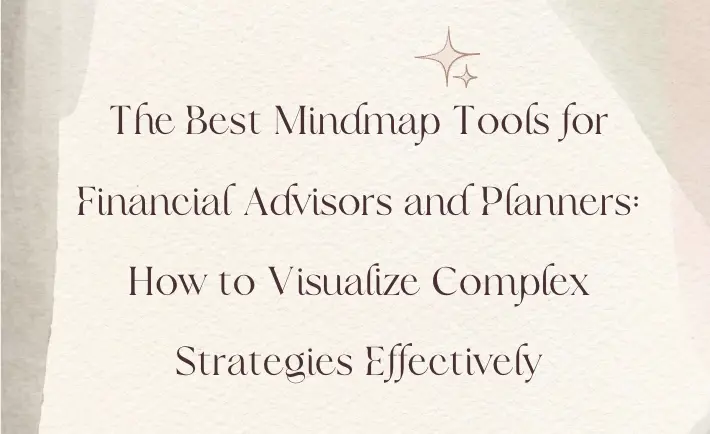
Discover the top mindmap tools for financial advisors and planners to visualize strategies, optimize planning, and improve client engagement.
Education Consultant
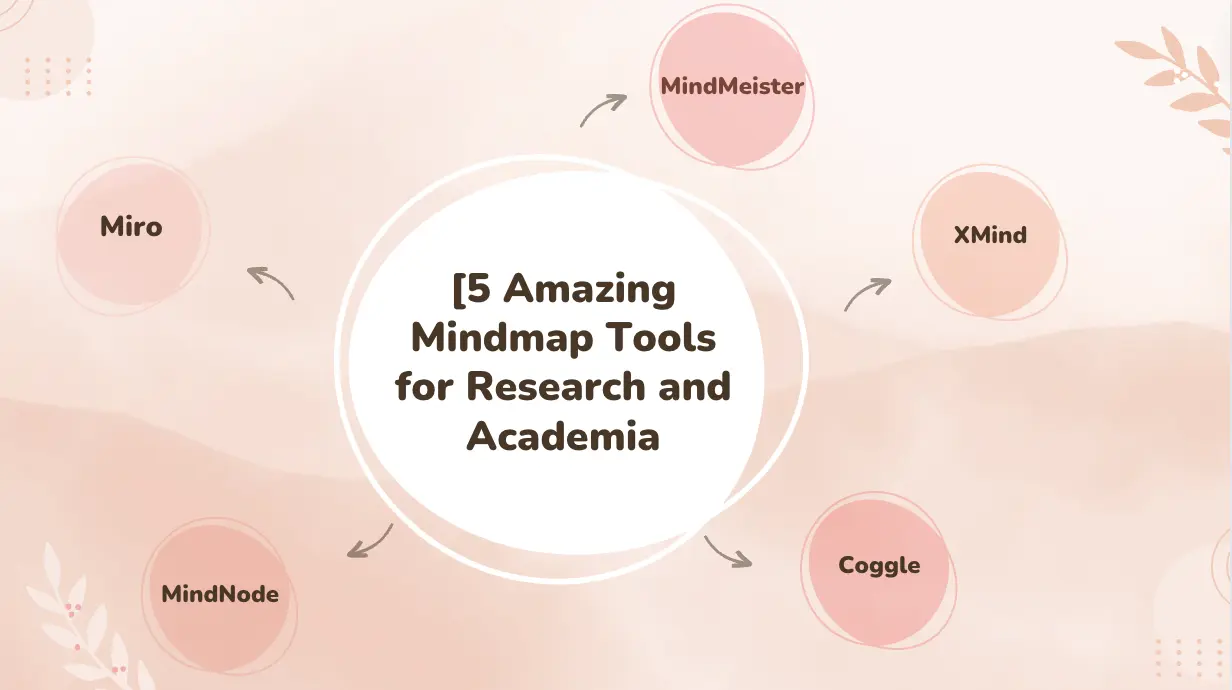
Explore five incredible mindmap tools that can enhance your academic research, streamline your workflow, and boost collaboration.
Education Consultant